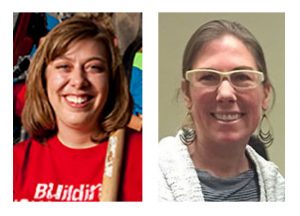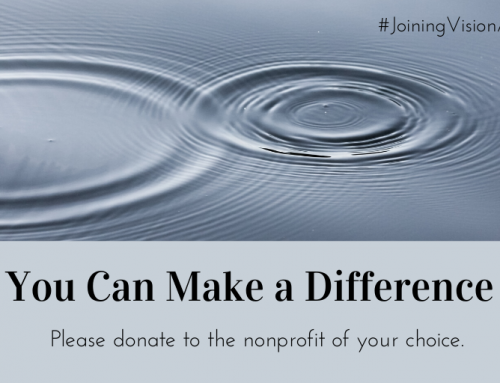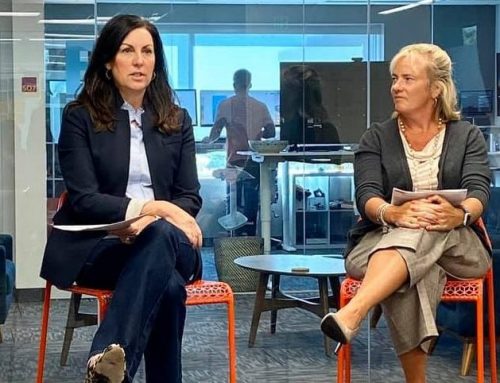Photo by rawpixel on Unsplash
By Sandy Wiegand, Copyeditor and Writer at Joining Vision and Action
Two experienced nonprofit executive directors joined JVA’s Executive Director Academy participants on the last day of the recent weeklong training, to answer questions and offer insights on nonprofit leadership.

Angela Bomgaars (left photo) is executive director of Extreme Community Makeover (ECM), which coordinates volunteer teams to partner with underserved people to improve their own homes and neighborhoods. Erin Mooney (right photo) is executive director of Cultivando, a nonprofit that works to cultivate community leadership to advance health equity through advocacy, collaboration and policy change.
In my previous blog, we learned Erin and Angela’s thoughts on staffing a board of directors. They also shared their perspectives on some other topics the Executive Director Academy class was curious about:
The best things about being an ED:
The variety of work
Angela: “In the nonprofit world, you have to wear a lot of hats. I like that. I wouldn’t want to be pigeonholed.”
Working with the community
Erin: “I love the work we are able to do as a small, nimble nonprofit—as a small grass-roots organization in a magical space of community-connected and community-driven. Our whole staff are brilliant and of the community.”
Angela: “I like the different people I get to connect with in different capacities.”
Angela recounted one memorable surprise—meeting the widow of the Broncos “Barrel Man” while working on a project in the Barnum neighborhood. She even received a (slightly oversized) T-shirt featuring his photo.
Being able to fix things
Erin: “I love the autonomy of being a nonprofit director. My team and I get to make decisions.”
Implementing what you’ve learned
Angela: “That’s the challenge anytime you have training: You have all these ideas, but how to implement them? Break it down. Look at what you take away from this week, your top three challenges, ideas or strategies—what is the first one to focus on?
“Say, I’m going to carve out time to be intentional with moving forward on this. What are actual steps you could do—action items. That makes big things much more doable—simple action steps that eventually get you making progress.”
Pushing boundaries for sector progress
Erin: “I talk to funders and push them to do better. There are a lot of people with good intentions, but do they understand community needs? … For the most part, I get really good response from funders I respect. Program officers say they appreciate the honesty and it helps them do their work. Every time I write a grant report, I say ‘please train your staff on racial equity.’”
Erin also noted the need for organizations that advocate healthy eating and active lifestyles to “talk about poverty, racism and toxic stress.”
Communicating outcomes
Angela: “We hand out a two-page evaluation sheet for every project.”
In addition to asking about participants’ satisfaction with different aspects of the project, and demographic information, Angela said, the questionnaire asks “big picture” questions such as: Do you know your neighbors? What do you like/would you change in your neighborhood? What other services do you need?
“We also ask, would you have completed this work on your own? If so, what are we doing it for? But 80 percent, approximately, are saying no. To me, that’s saying it’s worthwhile.”
Both panelists noted that some outcomes are hard to gauge or prove.
Angela: “We ask: What did this experience mean to you? You can’t necessarily measure it. It’s all about the people. Connecting you with people who show they care about you, building people-to-people connections.”
Erin: “Having data is good, but also platforms for people to tell their own stories in their own words. We ask community members who are willing to share what they have done with (Cultivando) and how it has impacted them.”
Some things “would be hard for us to measure. We can tell the story and show the policy changes and let community members tell the story. We don’t have an evaluation person on staff… Do we have capacity to track kids through third grade? No, so we’re going to point funders that way. Until then, we’re going to tell the story in a more qualitative way.”
Self-care
Angela: “Use each other as a resource. Maintain and seek out those relationships. A lot of people don’t get it when it’s not their day-to-day. People think ‘Isn’t that nice what you do?’ That’s not really what it’s about. There’s a lot more to it. Seek out each other for advice and ideas… This is not for the faint of heart.”
Erin: “Build a support system. Being an executive director can be very isolating and lonely. Build self-care into everything or you won’t make it for the long haul. We should not be killing ourselves for this work… it should be replenishing, and it’s not built that way.
“A lot of EDs think they have to do everything—and it’s impossible. It’s easy to get stuck in what we don’t do and not celebrate what we do. Take the Strengths-Finder and use it. Build a team that fills in your deficiencies. Then you can do great work. Do what you do well and then find folks to support you, and ask for help. And advocate for yourself. Nothing changes if we accept unhealthy things.”
Wish you could have joined us? So do we! Keep your eye on this spot for updates on next year’s Executive Director Academy trainings!






Leave A Comment